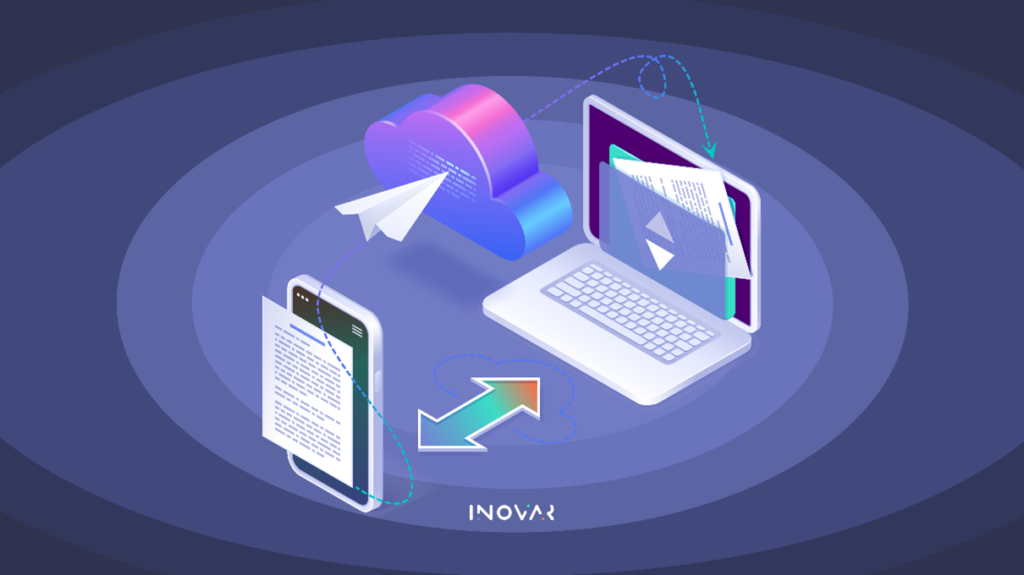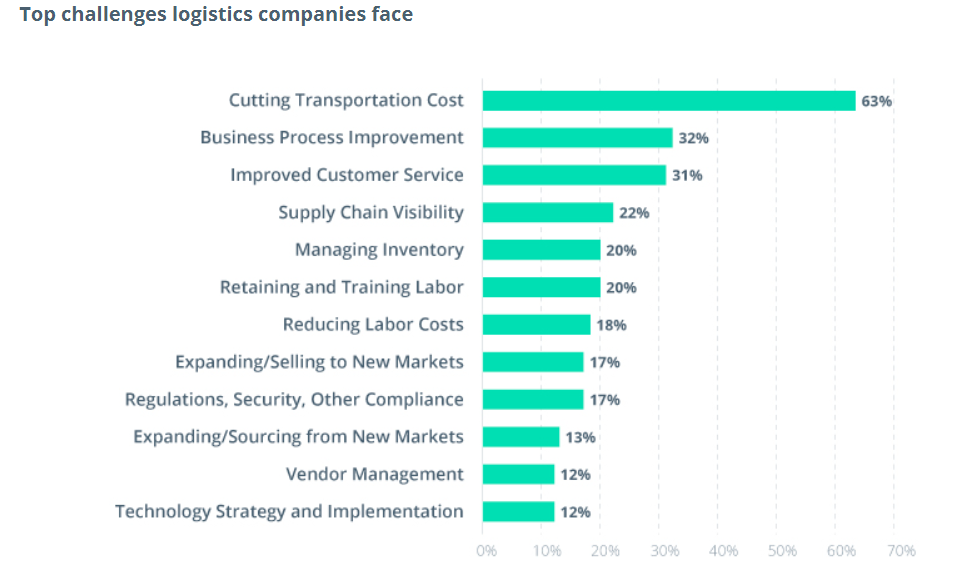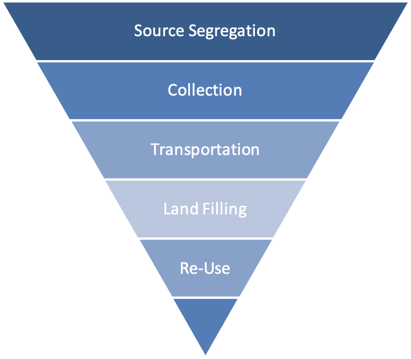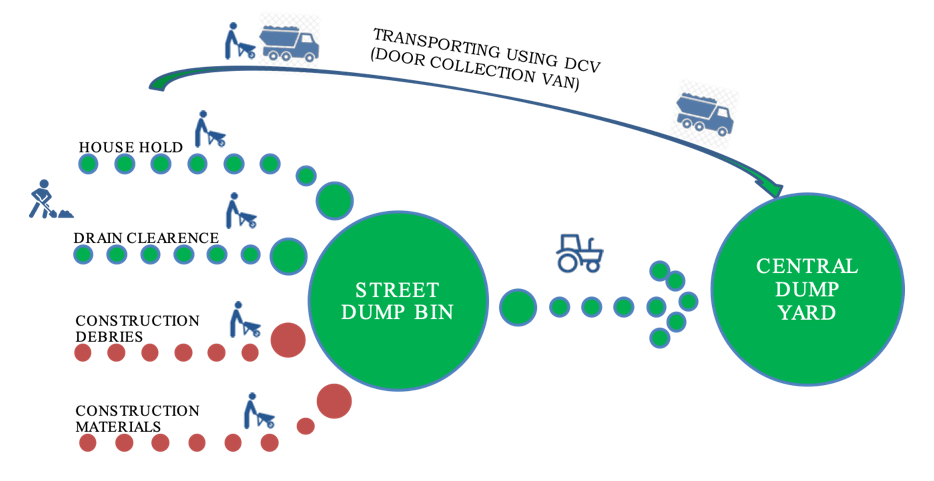Category: IoT
In the evolving world of technology, the Internet of Things (IoT) emerges as a transformative force, promising a connected landscape where devices seamlessly communicate and collaborate to enhance efficiency and convenience.
According to a Garner study, “The IT Services for IoT market will represent a 58-billion-dollar opportunity in 2025, up at a 34% CAGR from 2020.”
However, the success of an IoT implementation heavily depends on a well-crafted strategy that addresses the complexities and challenges within this interconnected world.
For an in-depth understanding of our IoT practices, strategies, and approaches, please refer to this exclusive whitepaper resource.
In this blog post, we will discuss four key components that form the foundation of a successful IoT strategy.
- Technology Infrastructure
Choosing an appropriate IoT platform is crucial to building a robust technology infrastructure. IoT platforms help manage IoT devices and data collection tasks and improve communication. Before selecting an IOT platform, factors like scalability, compatibility with existing systems, support for numerous IoT protocols, and ease of integration should be considered.
- IoT Application Development
IoT app development seamlessly integrates physical devices into cohesive digital ecosystems, promoting intuitive and responsive user experiences.
These applications leverage the power of interconnected devices to gather and analyze data, enabling personalized interactions based on individual preferences.
The cross-device connectivity facilitated by IoT apps ensures accessibility from various platforms, granting users unprecedented control over their IoT-enabled environments. Real-time communication features provide instant feedback and notifications, promoting engagement and empowerment.
Moreover, the robust integration of security measures ensures data privacy and shields against cyber threats, establishing trust in the reliability of these interconnected systems.
- Data Analytics and Insights:
The real value of IoT lies in the data it generates. A successful IoT strategy includes a robust data analytics component that transforms raw data into actionable insights. Utilizing machine learning algorithms can help analyze patterns, predict outcomes, and derive valuable information from the extensive data generated by connected devices.
These insights can inform strategic decision-making, enable predictive maintenance, and uncover opportunities for innovation. Implementing analytics at the edge, where data is processed closer to the source, can reduce latency, and enhance real-time decision-making capabilities.
Take a look at our exclusive case study where we developed a robust IoT fleet management system for intelligent insights and streamlined process automation.
- IoT And AI
The amalgamation of Artificial Intelligence (AI) and the Internet of Things (IoT) has unlocked numerous possibilities across various industries. AI with IoT represents a powerful collaboration wherein AI technologies enhance the capabilities of IoT systems, creating intelligent and more responsive environments.
AI brings intelligence and decision-making capabilities to IoT devices, enabling them to analyze vast amounts of data in real-time. This constructive collaboration allows for more context-aware responses, transforming raw data into actionable insights.
Whether it is predictive healthcare monitoring, autonomous vehicles, or precision agriculture, the fusion of AI and IoT is at the forefront of driving innovation and shaping a connected, intelligent future.
- Robust Security Measures:
Security is a crucial concern in the IoT landscape, given the extensive volume of data exchanged between devices. A successful IoT strategy must prioritize robust security measures at every stage of the implementation process. This includes secure device onboarding, data encryption, and continuous monitoring for potential vulnerabilities.
Adopting industry-standard security protocols and ensuring regular updates to address emerging threats are critical steps. Also, implementing a comprehensive identity and access management (IAM) system helps control and authenticate device access, minimizing the risk of unauthorized entry.
- Custom Software Solutions And Security Measures
In the world of interconnected devices that define the Internet of Things (IoT), the role of custom software solutions is crucial in strengthening security measures. Tailored to the unique needs of IoT ecosystems, custom software is instrumental in safeguarding the integrity, confidentiality, and functionality of these interconnected systems.
The dynamic nature of IoT demands continuous surveillance, and custom software solutions meet these challenges with features like regular security audits, updates, and monitoring capabilities that enable swift responses to potential threats. The integration of customized security measures not only meets the specific requirements of IoT deployments but also builds confidence in the reliability of interconnected systems, creating the foundation for a secure and resilient IoT landscape.
- Scalable Architecture:
IoT environments are dynamic and can scale rapidly as the number of connected devices grows. A successful strategy anticipates this scalability and incorporates a flexible and scalable architecture. The architecture should be capable of handling extensive data, supporting various device types, and seamlessly integrating with existing systems.
Cloud computing assists in providing the scalability required for IoT implementations. Cloud platforms can efficiently process and store massive amounts of data, offer robust analytics capabilities, and facilitate seamless integration with other enterprise systems.
For in-depth insights of our Cloud Computing strategies and approaches, please refer to our exclusive whitepaper resource.
- Future-Proofing IoT Ecosystem
Future-proofing the IoT ecosystem is a strategic necessity in the technological landscape. As the Internet of Things constantly evolves, organizations must adopt a forward-thinking approach to ensure the relevance of their interconnected systems.
It involves anticipating technological shifts, standards, and scalability requirements. Futureproofing also entails robust security measures that can withstand evolving cyber threats and compliance with industry standards.
Moreover, a focus on interoperability ensures that IoT devices and platforms can communicate seamlessly, promoting a cohesive and collaborative ecosystem.
In conclusion, a successful IoT strategy goes beyond simply connecting devices; it requires a thoughtful and comprehensive approach.
Organizations can unlock the full potential of the Internet of Things and pave the way for a connected and intelligent future by establishing clear objectives, prioritizing security, implementing a scalable architecture, and harnessing the power of data analytics.
As the IoT landscape continues to evolve, strategic planning and implementation remain relevant and crucial. Embrace these strategies, adapt to the rapidly advancing technological landscape, and position your organization at the forefront of the IoT revolution.
We at Inovar can help you leverage IoT for accelerated business success. Visit us and book a free consultation with our technical team today!
Explore our Case Studies to learn how our IT solutions drive results. Need more resources? Check out our blogs and whitepapers for in-depth insights.
References:
- 4 Key Components of a Successful IoT Strategy. Newsbreak
- Forecast: IT Services for IoT, Worldwide, 2019-2025. Gartner
The term “Internet of Things” has become a buzzphrase over the last ten years or so, and it looks like we’ll be hearing even more about it in the coming years. But there are also a few people who are not quite sure about this, many people scratch their heads and ask, “What is this, and why should I care?” That’s why we’re here.
Let’s begin with the basics.
What are IoT based applications?
The IoT is a network of Internet-linked devices or applications that gather information and send it along to some central data server, where the information is processed, collated, distilled, and used to make a host of tasks easier to perform.
Benefits of IoT applications
1. Enhanced Operational Efficiency
Using artificial intelligence IoT can continuously crunch streams of data and discover patterns that are undetectable by traditional gauges. AI has the capability to forecast operation circumstances and identify parameters that need to be changed to get optimal results.
2. Improving Precision Cost
Human minds are restricted in their ability to perform multitask at the same time and more prone to make mistakes.
But IoT can break down enormous amounts of data that are sent and received via tools. As the entire system is machine and software-driven, tasks can be completed without any human intervention, which eliminates errors and improves accuracy rates.
3. Maintenance and Predictive Evaluation
Intelligent IoT applications are the foundation of predictive maintenance. Anticipating analytics is a type of analysis that examines existing data and, depending on the findings, predicts potential future events. Businesses are currently using IoT applications to notify any accidents or concerns, such as equipment failure, in a computerized manner without human intervention.
As a result, the likelihood of losses is decreased as circumstances are recognized even before they fail to result in significant cost savings for huge corporations.
4. Improved Client Services and Satisfaction
Large volumes of customer data can be used to provide them with a far more personalized experience based on their preferences and to answer their questions correctly.
5. Increased Scalability
Mobile phones and high-end computers are the most prevalent IoT ecosystem, on the other hand, involve low-cost sensors that generate massive amounts of data. Before sending data from one device to another, the AI-powered IoT ecosystem analyses and summaries it. The compressed and manageable data now can be accessed through a considerable number of IoT-connected devices.
Future vision
A Gartner report predicts that connected devices across all manner of technologies will hit 20.6 billion. Many of the innovations mentioned are already in place to one extent or another. One thing’s for sure: there’s no going back. The IoT offers an unprecedented degree of control and efficiency that no industry can ignore.
So, there will be much to see and implement and if you are also looking for the same customized solution then, let’s get into a call with our experts. We would love to hear from you!
SaaS or Software as a Service is making a buzz in almost every industry, and logistics is no exception. Businesses across the globe prefer SaaS-based logistics software instead of investing in developing on-premises software that might take several months or even a year to build. To understand why this shift is happening- let’s first understand what are the problems the logistics industry is facing? And how SaaS-based applications can be a perfect solution for them.
SaaS is a mechanism of transferring software to everyone (individual or business) over the internet. In this nature of software licensing and release model, the license of the software can be availed periodically. The software is centrally introduced in the cloud, and the individual, availing SaaS access through any compatible browser.

Present industry challenges:
Transportation and logistics industries are constantly struggling with challenges- like complex competition, changing customer expectations, and leveraging digitization to succeed. Lack of ‘digital culture and training is thus the biggest challenge for these companies. Attracting the right skills is one issue, but developing the right strategy is even more crucial.

Besides, an increasingly competitive environment is another dominant factor in the mix. Some of the sector’s customers are springing logistics services of their own, and different competitors to the business are shaping out more profitable aspects of the value chain by exploiting digital technology or brand-new ‘sharing’ business models. They don’t have asset-heavy balance sheets or cumbersome existing arrangements weighing them down.
There is no other industry where so many experts ascribe vast influence on data and analytics in the next five years than transportation and logistics. There are vast possibilities to enhance performance and serve customers better, and LSPs who are part of a digitally integrated value chain can benefit from significantly increased forecasting to scale up capacity or down and plan routes. Adding machine learning and artificial intelligence techniques to data analytics can deliver truly dynamic routing.
Business solutions
One of the most promising ways for transportation companies to improve their workflows and find new ideas for business growth is using a custom SaaS system. These systems guarantee more agile data processing and greater automation of operations than out-of-the-box solutions. They also allow companies to build only the features they need.
From streamlining processes to increasing visibility in the supply chain, their pertinence has grown in quality. According to Statista, 87% of logistics and supply chain firms are tapping into cloud-based solutions to facilitate transportation management and gain an edge in an ever-changing marketplace.

Businesses can optimize SaaS solutions to automate the logistics workflow and free employees from performing routine tasks connected with paperwork.
Logistics is a sphere of multitasking and multiprocessing. Robust SaaS solutions are essential for tracking details and conducting analysis, which helps businesses detect issues and optimize their work. They are designed to simplify and manage complicated logistics problems by taking an integrated, end-to-end approach. The functionality enables optimal route planning, reductions in fuel costs, and significant improvements in asset utilization
.

Logistics companies gain real-time visibility from SaaS solutions into logistics processes and data, assisting businesses to keep their operations under command. SaaS logistics solutions support companies to reach a more predictable supply chain, while companies can associate in the cloud to cooperate efficiently.
SaaS solutions empower operators to access high-level route planning abilities on demand, encouraging them to avoid the high capital cost investment and the in-house IT staffing required for superior systems integration. We can directly scale them up or down according to business needs without infrastructure changes as they are delivered as a service.
Inovar optimized SaaS solution for logistics
Inovar joined hands with fleet operators to manage their logistics operations and apply technology for making their workflow automated. With an AI-powered SaaS solution, we gave fleet operators ways to predict demand, optimize vehicle usage, and give them real-time tracking of their vehicles from both fleet operators and consumers.
Our first aim was to bring all stakeholders Markets, Warehouses, Traders, Ports, and Truckers under a single virtual platform and allow them to trade on-demand within an open marketplace.
Inovar brought Microsoft Azure IoT and machine learning services within a customized application that could build a connected platform for fleet operators. The solution could not only gather data efficiently but generate intelligence as it was used. Another remarkable feature was analytics and event hubs that captured data used in a Databricks platform to generate insights. Using these insights, system booking, scheduling, predictive maintenance cycles became 70% easier than before.
Finally, the system went live with 1000+ vehicles, and the logistics client started to reap ROI from multiple avenues. Within 3 months, the efficiency of their operations improved by 30% with better security, high scalability, and faster availability from the end-user.
Summing up, we can say that cloud logistics automation is beneficial to all participants in the supply chain. It allows you to easily solve complex problems, so its popularity will only grow every year. As a logistics software development partner, we solve many standard and custom needs of the transportation industry from Business as well as Technology perspectives. After many years spent in the logistics domain, our dedicated development team learned specific details and gained experience that can be used to effectively help you with any of your logistics software that you need to develop.
InovarTech is ready to improve your automation experience. With our brilliant forms and streamlined workflows, you will be fit to tackle process technologies and know-how to adapt them to your institution. Reach out to us today to get started. You can take comfort because we know process automation and how to implement them effectively. Let us deliver high-volume processes to your doorstep.
Continuous economic activities, rapid urbanization, population growth and the rise of living standards have greatly accelerated the generation of municipal solid waste (MSW). This poses considerable challenges for governments, civil society and private sectors to protect and promote the environment and sustainable development.
Waste recently is more considered as a resource rather than garbage of no value (Zaman, 2010). Waste as a resource, refers to resource recovery that can be converted into other material and energy. MSW has great potentials to transform into other form of resource and energy through proper treatment. Additionally, increasing challenges of climate change resulting from MSW have raised people’s attentions on waste management.
Understanding the scenario
The growing quantities of MSW will have a significant impact on the development of social, environmental and economic aspects. However, there are several critical issues, such as deficiency of information and knowledge, less developed policy and strategic planning, lack of technology support, and lack of financial investment.
Waste management hierarchy is a generally accepted guiding principle for prioritizing waste management practices to achieve minimum adverse environmental and health impacts from wastes. The waste management hierarchy in Figure 1 shows the preferred order of waste management practice, from most to least preferred.

But most importantly for municipalities and authorities, tracking and monitoring that the work is getting done is of prime importance. Inovar was brought into situation to provide a smart IoT based solution to ensure all their financial investments are at work and Waste management is being carried out as expected.
 Solution
Solution
Inovar quickly realized, Waste containers are everywhere—behind restaurants, retail stores, and hotels, at office buildings, and on construction sites. Even the collection process and transportation routes taken, were erratic and not optimized to reduce cost and maximize benefit.
We proposed a 2 part system, First part was to handle the waste level and the collection team. Second part was to manage the transportation of waste to the designated area with efficiency.
For waste collection procedure, we implemented sensor based technology in the collection units to assess the level of the waste. For ground crew cleaning public areas, we created a mobile based attendance and reporting element which can track their locations and real time and ensure that there are working as per the plan laid out.
For Logistics we again used IoT devices, to track trip mileage/fuel consumption, real time location tracking, engine idle time and deviation from planned route or tasks.
Finally, In the cloud, the real time analysis has to be carried out to generate various reports, alerts & notifications like- area waste collection activity, Daily attendance, vehicle movements, seasonal or function reports on waste, segregation reports etc. which can help the Municipal corporation with better strategies for waste management.